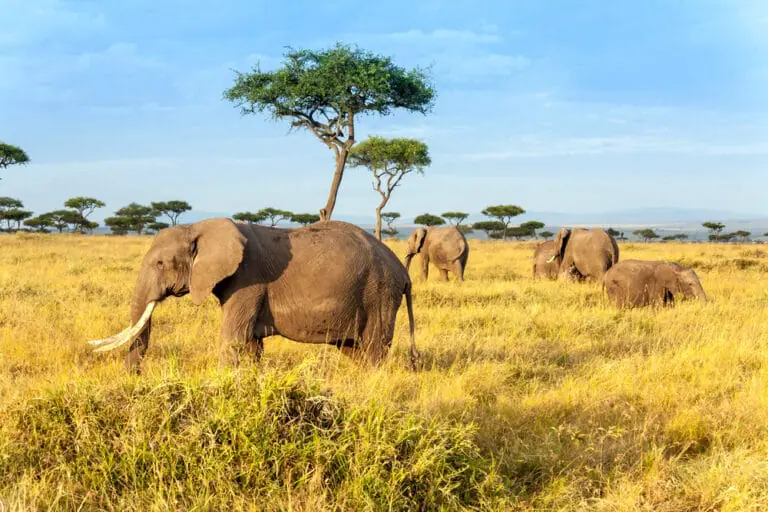Best Time to Visit Kenyan Safaris
Venturing into the heart of East Africa for a Kenya safari is a remarkable experience that captivates travelers from across the globe. Each season presents its magic and challenges, transforming the landscape subtly yet profoundly. The dry season, spanning June to October, unveils a world teeming with life as animals gather around scarce water sources, creating perfect photography opportunities. During these months, the savannah comes alive with drama as the Great Migration—one of nature’s most spectacular events—enters the Masai Mara. It is a sight to watch thousands of wildebeest and zebras gallop across the plains, risking it all for fresh pastures. However, let us not overlook the rainy seasons, which blanket the region in vibrant greens. In November and April, the rains rejuvenate the land, and while some roads become challenging, the rewards of fewer tourists and richer landscapes could be worth the journey.
Types of Safaris Available in Kenya
Embarking on a safari in Kenya isn’t a one-size-fits-all experience; it offers diverse adventures tailored to every traveler’s dream. For those who crave the classic bush experience, jeep safaris are ideal. They cover vast distances, ensuring you capture as much wildlife action as possible. Feel the terrain beneath you and the wind in your hair as you pursue elusive predators and majestic elephants. If a slower pace appeals to you, walking safaris allow an intimate exploration of the landscape. Here, you can connect more personally with the flora and fauna, guided by knowledgeable trackers who bring the stories of the land to life. For those seeking unique perspectives, imagine floating gently over the savannah in a hot air balloon, witnessing the waking world beneath your feet as the sun rises, painting the sky in shades of pink and gold. Culinary delights await upon descent with a serene bush breakfast, making for an unforgettable morning. Mixing and matching these experiences creates a well-rounded and profoundly satisfying safari adventure.
Top Wildlife Spots in Kenya
Kenya is a treasure trove of wildlife spectacles, and its national parks and reserves each add a unique brushstroke to nature’s grand canvas. The Masai Mara stands as the crown jewel, its vast savannah echoing with the rhythm of the Great Migration and harboring the Big Five: lion, leopard, rhinoceros, elephant, and buffalo. Yet, the wonders don’t stop there. Journey south to Amboseli National Park, where herds of elephants meander beneath the looming shadow of Mount Kilimanjaro. This picture-perfect backdrop makes for iconic photos and unforgettable memories. For avian fans, Lake Nakuru National Park is a must-visit; when conditions are right, its waters shimmer under the weight of thousands of flamingos. Beyond these renowned spots, quieter parks like Tsavo or Meru offer a raw, unfiltered communion with nature, where surprises wait around every corner, from endangered wildlife to hidden waterways.
The Importance of Wildlife Preservation
Kenya’s allure lies not only in its vistas but in the delicate balance of life that thrives within them—a balance that necessitates vigilant preservation efforts. Conservation is at the heart of maintaining Kenya’s wild beauty. Many safari operations have embraced sustainable tourism, ensuring their footprint is light and local communities benefit. The significance of responsible tourism cannot be emphasized enough; it is crucial for protecting ecosystems that sustain intricate wildlife communities. Tourists can help with these initiatives by selecting tour companies dedicated to conservation, being conscientious travelers, and following park rules and wildlife boundaries. Educational initiatives, like those championed by the World Wildlife Fund, continue to play a crucial role in educating locals and tourists on the integrative efforts needed to protect this natural heritage.
Cultural Experiences Beyond the Safari
While Kenya is often synonymous with safaris, it’s also a country rich in cultural heritage and diversity. Engaging with local communities enriches the travel experience and fosters mutual understanding and respect. The vibrant Maasai, with their distinct red shukas and age-old customs, offer immersive cultural experiences for visitors. Participate in traditional dances, listen to the rhythmic beat of storytelling, and learn about their sustainable cattle herding practices that have endured harsh climates over centuries. Similarly, the Samburu and Kikuyu people offer unique cultural insights, each with their traditions and ways of life. These interactions support cultural preservation and provide economic benefits to local communities, ensuring these rich traditions thrive alongside modern development.
Essential Tips for First-Time Safari Travelers
To fully embrace the magic of a Kenyan safari, preparation becomes paramount. Packing essentials include neutral-colored clothing for effective camouflage in the bush, ensuring a closer, more harmonious interaction with nature. Equip yourself with binoculars to spot distant wildlife and a good-quality camera to capture breathtaking moments. Early mornings are often chilly, so dressing in layers will keep you comfortable as temperatures rise. Respecting wildlife rules and maintaining a safe distance is vital to your safety and the well-being of the animals. Safari guides are experts; their advice will enhance your experience, revealing hidden gems of knowledge about animal behavior and the environment. Lastly, patience and adaptability are key. Nature’s rhythms are unpredictable; sometimes, the most memorable encounters are the ones you least expect. These experiences promise a journey into a world where humanity and nature intertwine, offering insights and memories long after the safari concludes.

